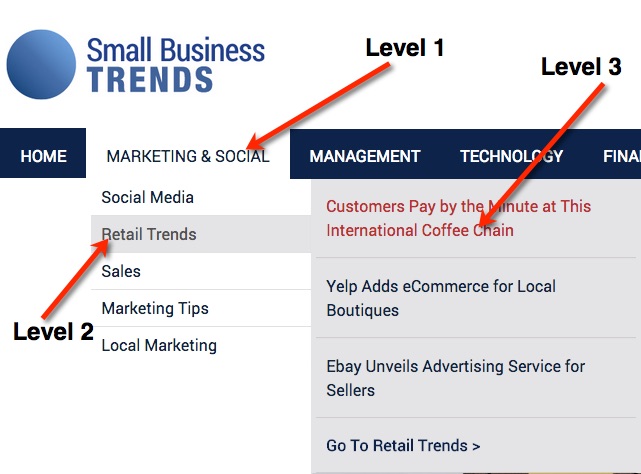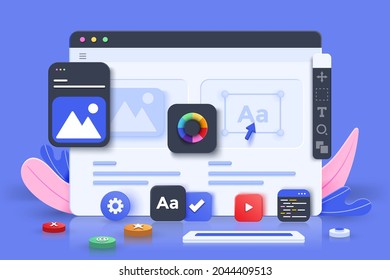
UI/UX Engineering refers to a discipline of design that focuses primarily on the user experience when using digital products. This field requires close collaboration with software engineers and designers. It is an integral part product development.
UI/UX engineers help companies create attractive and user-friendly user interfaces. They often work in cross-functional teams and make sure that the user experience is both user-friendly and intuitive. They ensure that the interface is compatible with devices and easy to use. A good UI/UX can improve customer satisfaction and increase brand loyalty. Easy-to-use interfaces can be a great way for a company to promote a new product. A bad UI/UX could be detrimental to a company's ability to succeed, since it can open up opportunities for other competitors to grab clients.

UX/UI engineers are well-versed in the latest technologies and have a deep understanding of user experience principles. This job requires a keen eye for detail and an ability to design visually. A skill that can quickly adapt to changing circumstances is essential. Since the role is often interdisciplinary, it is important to have an understanding of both design and programming.
UX/UI Engineering Germany continues to grow. A thriving economy and top-notch academic standards make Germany a perfect place for students to pursue a career. To learn the skills needed to get a job, many people enroll in design bootcamp programs. These programs cover all aspects of product design. Students are paired with an experienced mentor to guide them through the program. The typical length of the program is six to nine month.
UI/UX Engineers design and develop user interface elements for software products. This role is often found in large companies, but it can also be freelance. Typical salary ranges for this position are $600,00 to $130,000. UI/UX engineering salaries tend to be lower than those in other engineering fields, so it's important to know how to differentiate yourself from other applicants.
Designing, coding, and problem solving are important skills for UI/UX engineers. They help to transform ideas into visual components and work with back-end engineers to create user interfaces that are intuitive, responsive, and functional. Their ideas can be brought to life by working closely alongside designers.

UI/UX Engineers have the ability to work in a wide range of companies. Pablo Rodriguez, the director of UI/UX engineering, is employed by companies like Twilio. They use a design system called Paste Design System. He has over 20 years of experience in this industry. His job includes working on dozens of projects, including for startups and major corporations.
For those who love visual design, UI/UX designers can be a rewarding career. Although designers may not hold a formal degree in UI/UX, they do often have a passion for visual design. They may be graphic designers, interaction designers or game designers. Many designers learn UI/UX through a bootcamp. Some of the top designers in the industry develop lessons for these courses.
FAQ
What is website design software?
Website design software is used by graphic artists, photographers, illustrators, writers, and others involved in visual media to create webpages and other digital materials.
There are two main types: cloud-based or desktop software. Desktop apps can only be installed locally on your PC and will require additional software to run on your system. Cloud-based solutions can be hosted remotely over the internet. They are ideal for mobile users as they don't require additional software.
Desktop Applications
While desktop applications offer more advanced features than those in cloud-based solutions, they aren't always necessary. Some people prefer working exclusively on a desktop app, as they find it easier. Some people like the same tool no matter whether they're working on a computer or a smartphone.
Cloud-Based Solutions
A cloud-based solution is a good choice for web designers who are looking to save money and time. These services let you edit any type or document anywhere you have an internet connection. This means you can use your tablet to do some work while you wait for your cup of coffee to brew.
If you decide to use a cloud service, you will still need a license. You won't need to purchase additional licenses if you upgrade to a later version.
These programs can be used to create web pages, if you have Photoshop, InDesign or Illustrator.
Can I use a Template or Framework on My Website?
Yes! When creating websites, many people use pre-built templates. These templates have all the code you need to display your information on your website.
Some of the most well-known templates are:
WordPress - The most popular CMS
Joomla – Another popular open-source CMS
Drupal - A large-scale enterprise solution that large businesses use
Expression Engine - Yahoo's proprietary CMS
Each platform offers hundreds of templates. Finding the right template should be simple.
What Kinds Of Websites Should I Make?
The answer to this question depends on your goals. It may be best to sell online your products to build a company around your website. This can only be achieved by building a solid eCommerce website.
Blogs are another popular type of website. Each type of website requires different skills. To set up a blog for instance, you'll need to learn about blogging platforms like Blogger and WordPress.
It is important to choose the right platform for your site. There are many templates and themes that are free for each platform.
Once you've chosen a platform, you can build your website by adding content. Your pages can be filled with images, videos and text.
Your new website is ready to be published online. Visitors can access your website in their browsers once it is published.
Statistics
- Did you know videos can boost organic search traffic to your website by 157%? (wix.com)
- It enables you to sell your music directly on your website and keep 100% of the profits. (wix.com)
- Is your web design optimized for mobile? Over 50% of internet users browse websites using a mobile device. (wix.com)
- Studies show that 77% of satisfied customers will recommend your business or service to a friend after having a positive experience. (wix.com)
- It's estimated that chatbots could reduce this by 30%. Gone are the days when chatbots were mere gimmicks – now, they're becoming ever more essential to customer-facing services. (websitebuilderexpert.com)
External Links
How To
How can I become a UI designer?
There are two paths to becoming a UI design:
-
You can also go to school and get a degree as UI Design.
-
You can go freelance.
To be able to enter school, it is necessary to attend college/university and complete four years. This covers art, business, psychology, and computer science.
You can also enroll in classes at state universities or community colleges. Some schools offer free programs; others charge tuition fees.
You'll need to find work once you have graduated. If you plan to work for your own business, you need to establish a client base. Networking with other professionals is important so that they know you are there.
You can also look for opportunities to intern at companies that specialize in developing web applications. Many companies hire interns to gain experience before hiring full-time employees.
Your portfolio will help to get you more work. Your portfolio should contain your work samples and details of the projects you worked on.
It is a good idea for potential employers to receive your portfolio via email.
As a freelancer, you will need to market yourself. Advertise your services on job boards such as Indeed, Guru, Guru, and Upwork.
Freelancers receive assignments often from recruiters who post open positions online. These recruiters are looking for qualified candidates to fill certain positions in specific industries.
These recruiters will typically give the candidate a project brief that outlines the position's requirements.
A freelancer is not required to sign a long-term contract. If you are looking to make a move, however, it is advisable to negotiate an upfront payment.
Designers prefer working directly with clients over working through agencies. Although this may seem appealing, many people lack necessary skills.
Agency workers usually have extensive knowledge about the industry they are working in. They can also access specialized training and resources that will allow them to produce top-quality work.
Agency workers also receive higher hourly rates.
You won't be able to get in touch with your employer directly if you work with an agency.
You must be creative, self-motivated and flexible to succeed as a UI Designer.
Also, you must have excellent communication skills both verbally and in writing.
UI designers are responsible to design websites using user interfaces (UI) as well as visual elements.
They also ensure that the site meets users' needs.
This means understanding the needs of visitors and how the site should work.
UI designers use various tools to create wireframes. Wireframing is a way for them to visualize the layout of a page prior to beginning their designs.
Wireframe templates are available online, making it easy for anyone to create their own wireframes.
Some designers focus solely on UI design, while others combine UI design with graphic design.
Photoshop is used by graphic designers to edit images.
Adobe InDesign is then used to layout pages and layouts.
Photographers capture images using digital cameras or DSLRs.
The photos are then uploaded into a photo editing program. Here they can add captions, filters, or other effects.
The photographer saves the image to a file compatible with the website.
It is important to take into consideration all aspects of the design process when building a website.
This includes research as well planning, wireframing. prototyping. testing. coding. content creation. and publishing.
Research – It is essential to do extensive research before you begin a new project.
Planning - Once your research is complete, you can begin to create a plan.
Wireframing- A wireframe - A wireframe represents a sketch of an application or web page.
Prototyping – Prototypes are used to verify that the final product is consistent with the original vision.
Testing - The prototype should undergo multiple rounds of testing to ensure it works properly.
Coding - Coding refers to the process of writing computer code.
Content Creation - Content creation covers everything from writing copy to managing social media accounts.
Publishing means uploading files onto a server and making the site accessible.
You'll need to be able to understand the different projects you work on as a freelance UX/UI Designer.
Some companies may only need wire frames while others require complete prototypes.
You may be required to perform specific tasks depending on the project you accept.
For example, if you're hired to create wireframes, you might be expected to create several wireframes over time.
If you're being hired to create a full prototype, you might be asked to create a fully functional site.
It doesn't really matter what project you're working on, good interpersonal skills are vital.
Referring freelancers is the best way to get work. It's important to establish good relationships with potential employers.
Furthermore, you should be able and able to communicate both verbally AND in writing.
A portfolio is an essential part any freelancer's arsenal.
It displays your work and shows your ability to produce high-quality results.
This can be done online by creating a portfolio.
It is a good idea to look for websites that are similar to yours to get you started.
You can then search these websites to find out which one offers its services.
After identifying the best practices that you believe to be most successful, you can go ahead and implement them.
It's also useful to include links from your portfolio in your resume.